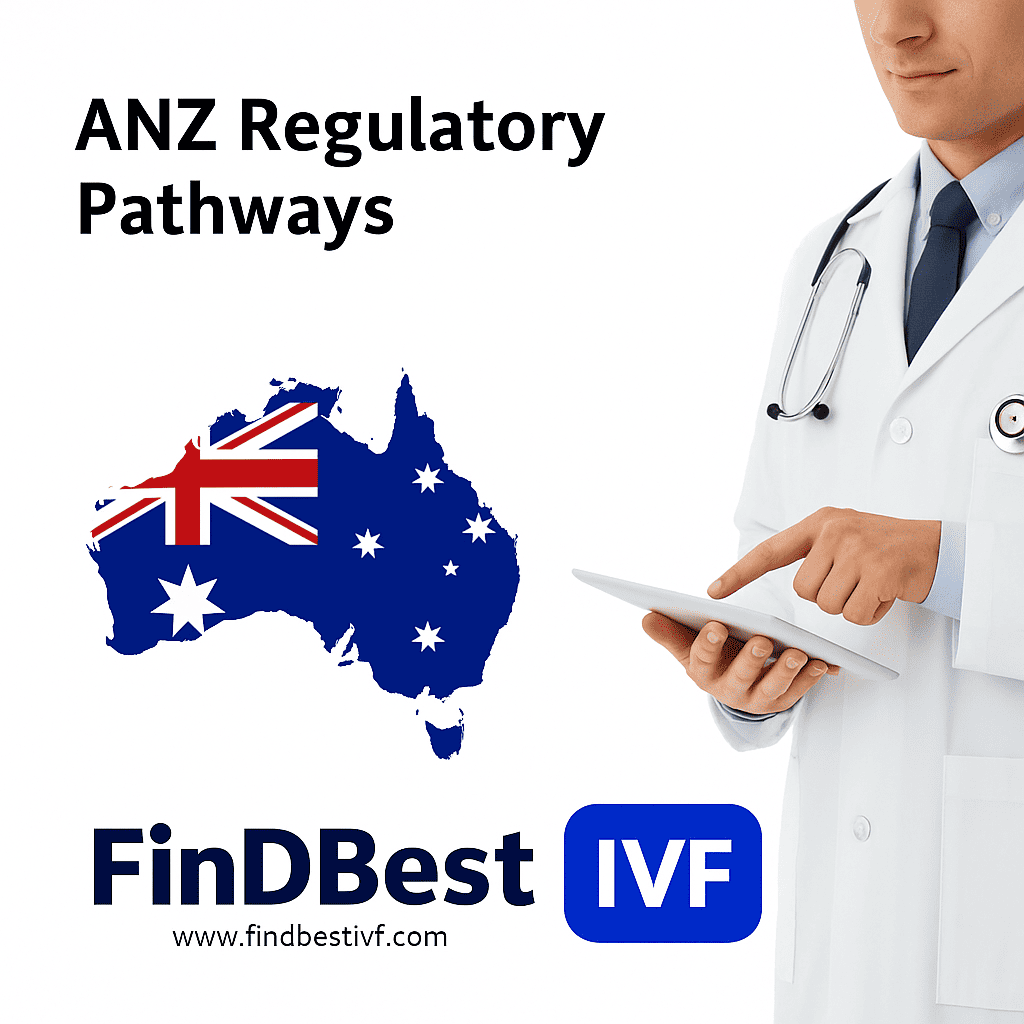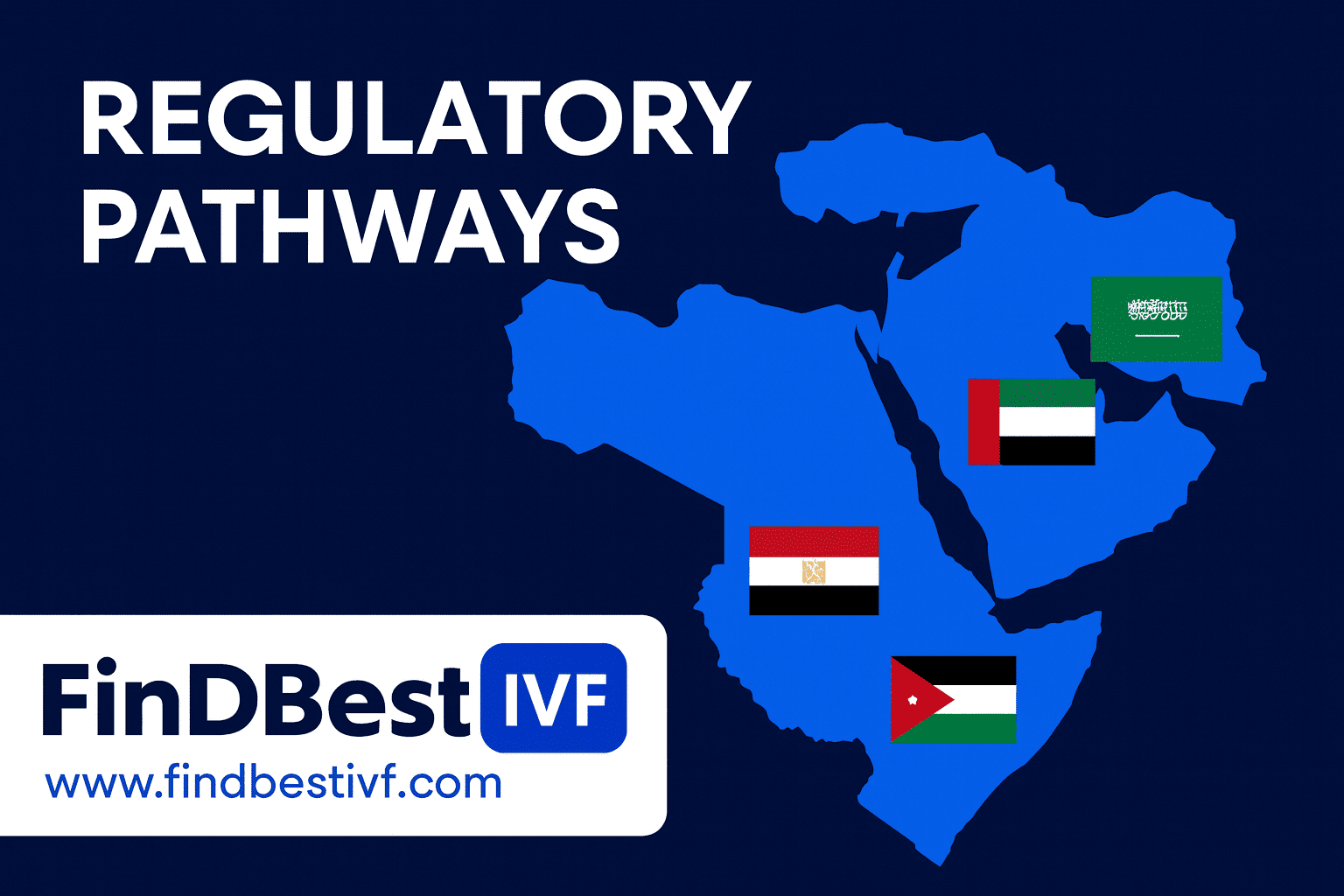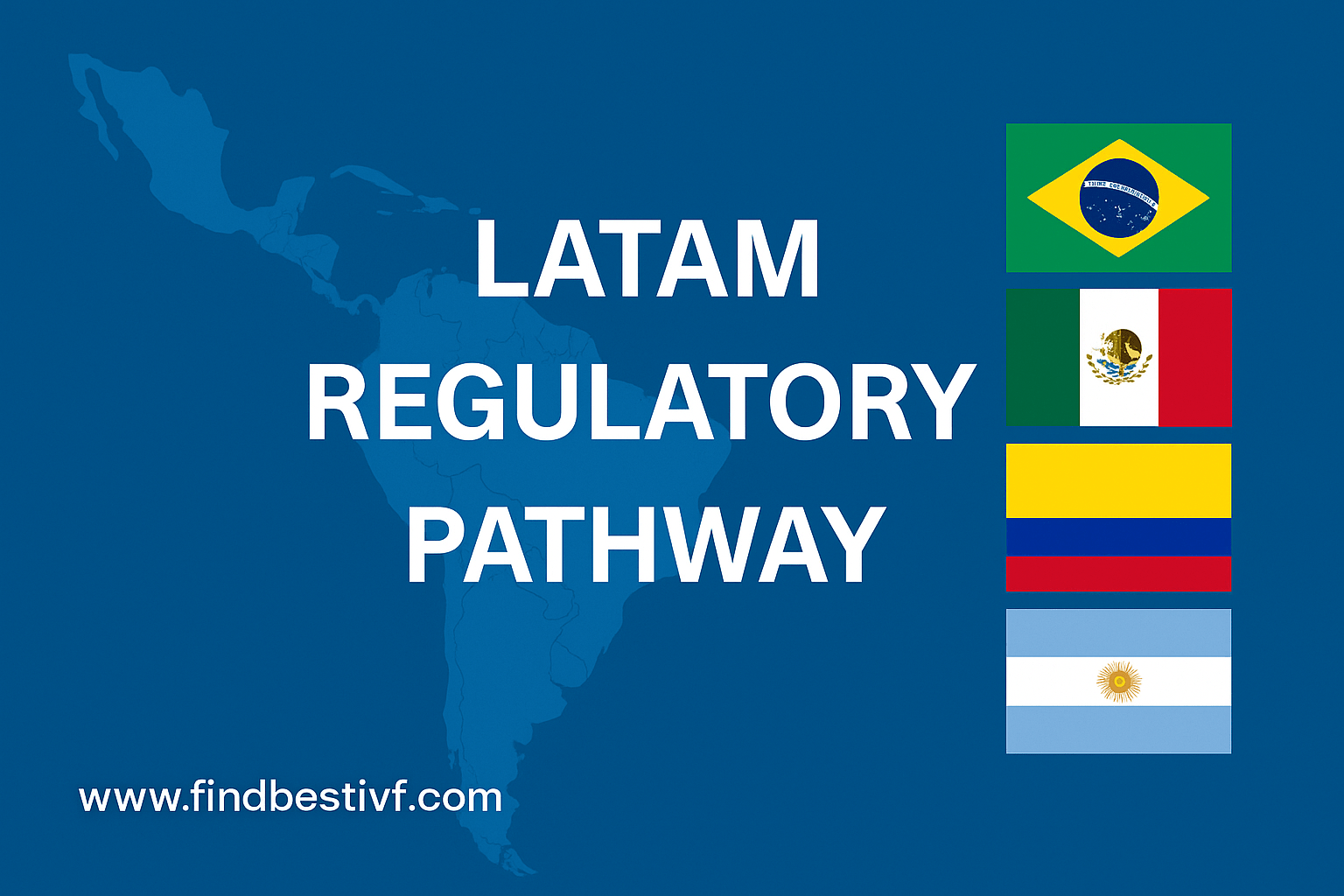Your complete, up-to-the-minute guide for ART market access in Australia and New Zealand, covering the TGA’s mandatory UDI rollout and New Zealand’s definitive repeal of the Therapeutic Products Act.

Why Australia & New Zealand Remain a Vital Hub for IVF Innovation
For global manufacturers of Assisted Reproductive Technology (ART), Australia and New Zealand are not just markets; they are strategic benchmarks for quality and innovation. The Australian fertility clinics market alone is valued at approximately $810 million in 2025, with the broader IVF market projected to grow at a robust CAGR of over 8% through to 2033. This growth is fueled by a strong demand for advanced technologies, from AI-powered embryo selection to next-generation genetic diagnostics.
Achieving approval from Australia’s Therapeutic Goods Administration (TGA) is a globally recognized stamp of excellence that can significantly streamline registration in other key APAC and GCC regions. In a major turn of events, New Zealand has repealed its comprehensive new regulatory act, reverting to its streamlined notification system. This creates a unique strategic window for agile manufacturers to secure market presence ahead of future legislative changes.
Australia: Mastering the TGA’s Gold-Standard Framework in 2025
Regulatory Snapshot
All IVF-related products—including culture media, embryo transfer catheters, incubators, Software as a Medical Device (SaMD), and PGT kits—must be included in the Australian Register of Therapeutic Goods (ARTG) before they can be legally supplied. The TGA employs a stringent, risk-based classification system, with most ART devices falling into Class IIa, IIb, or III.
Crucial TGA Requirements for 2025
- Australian Sponsor: Appointing a local, Australia-based sponsor is a mandatory first step. This entity is legally responsible for your ARTG inclusion, post-market surveillance, and regulatory compliance.
- Conformity Assessment: You must provide robust evidence of conformity. This is most commonly done by leveraging an existing CE Certificate via a Mutual Recognition Agreement (MRA) or undergoing a direct, full conformity assessment by the TGA.
- Mandatory Unique Device Identification (UDI): The TGA’s UDI system is now official. The regulatory framework came into effect on March 24, 2025, to dramatically improve device traceability and post-market safety. Compliance is being phased in:
- Action Required: Sponsors must prepare to submit UDI data to the Australian Unique Device Identification Database (AusUDID).
- Key Deadline: For high-risk devices (Class III & IIb), compliance with UDI labeling and data submission is mandatory for any devices supplied after July 1, 2026.
- Strengthened Post-Market Surveillance: The TGA is bolstering its safety monitoring. From March 21, 2026, mandatory adverse event reporting by all Australian hospitals will be enforced. This will lead to faster detection of safety signals and places greater emphasis on manufacturers’ vigilance systems.
- Evolving SaMD & AI Regulation: The TGA is intensely focused on software and AI-driven devices. For technologies like AI embryo scoring algorithms, manufacturers must provide strong clinical evidence, robust cybersecurity measures, and a clear lifecycle management plan for handling software updates and algorithm changes.
IVF Product Pathways & Timelines
| Product Type | Typical Classification | Regulatory Path & 2025 Considerations | Est. Timeline |
| Embryo Catheters | Class IIa | ARTG Inclusion, often leveraging existing CE marking. | 1–3 months |
| Culture Media | Class IIb–III | Requires detailed biological and clinical data; often subject to TGA audit. | 6–12 months |
| Time-Lapse Incubators | Class IIb | Comprehensive safety, electrical, and performance data is essential. | 6–12 months |
| AI Software (Embryo Scoring) | Class IIa/IIb | Must comply with SaMD framework, including clinical evidence for the algorithm. | 4–9 months |
| Genetic Test Kits (PGT) | Class III IVD | Highest scrutiny. TGA is aligning with EU IVDR, impacting classification and evidence requirements for cancer and genetic screening tests.[12] | 9–15 months |
New Zealand: Navigating the Regulatory Reset
A Major Legislative Reversal
In a critical update for all medical device manufacturers, the New Zealand government has repealed the Therapeutic Products Act 2023. The planned shift to a comprehensive pre-market approval system has been abandoned. Instead, New Zealand has reverted to its existing regulatory framework under the Medicines Act 1981 for the foreseeable future.
Your 2025 Strategy for New Zealand
The current system, overseen by Medsafe, is a notification-based model. This presents a fast and straightforward path to market.
- Current Process: An NZ-based sponsor (your importer or distributor) must list your device in the Web-Assisted Notification of Devices (WAND) database before it can be supplied.
- Approval Type: This is a listing, not a pre-market approval.
- Timeline: WAND notification is virtually instantaneous.
- Key Obligation: The sponsor must hold the complete technical dossier demonstrating the device complies with essential safety principles. Medsafe can request and audit this file at any time.
While the government intends to develop new, modern legislation, no timeline has been set.[16][17] This creates a pivotal moment for manufacturers.
- Opportunity: Use the efficient WAND process to establish your products in the New Zealand market now.
- Future-Proofing: Prepare a high-quality technical file that meets Australian TGA or EU MDR standards. This ensures you are ready for any future regulatory shift without delaying your business.
Strategic Comparison for Market Entry
| Topic | 🇦🇺 Australia (TGA) | 🇳🇿 New Zealand (Medsafe) |
| Local Representative | Australian Sponsor (Required) | NZ Sponsor (Required) |
| 2025 Approval Path | Pre-market Approval (ARTG Inclusion) | Pre-market Notification (WAND Database) |
| Technical Dossier | Submitted to TGA for review (Class IIb/III) | Retained by sponsor, subject to audit |
| Review Time | 1–15 months, based on risk class | Instant notification |
| UDI System | Mandatory rollout in progress | Not implemented |
| Future Outlook | Stable framework with evolving requirements | Current system remains; new legislation to be developed |
Don’t Navigate the ANZ Regulatory Maze Alone
The regulatory landscapes in Australia and New Zealand are powerful but distinct. One demands rigorous pre-market scrutiny and adherence to new tracking systems; the other requires strategic positioning in a period of legislative calm.
FinDBest IVF is the B2B marketplace built to give ART device innovators the competitive edge. We connect you directly with:
- Vetted Local Partners: Find qualified sponsors and distributors with proven IVF regulatory experience in both markets.
- Accelerated Compliance: Find expert local partners that will guide you through TGA’s UDI requirements and Medsafe’s notification process.
- Future-Ready Strategy: Gain insights to ensure your regulatory approvals in ANZ support your wider global ambitions.
Ready to secure and expand your footprint in Australia and New Zealand?

Acronyms
| Acronym | Meaning |
| ANZ | Australia & New Zealand |
| ART | Assisted Reproductive Technology |
| ARTG | Australian Register of Therapeutic Goods |
| TGA | Therapeutic Goods Administration (Australia) |
| UDI | Unique Device Identification |
| AusUDID | Australian Unique Device Identification Database |
| SaMD | Software as a Medical Device |
| MRA | Mutual Recognition Agreement |
| CE Mark | Conformité Européenne Mark (EU certification) |
| PGT | Preimplantation Genetic Testing |
| IVDR | In Vitro Diagnostic Regulation (EU) |
| NZ | New Zealand |
| WAND | Web-Assisted Notification of Devices (Medsafe NZ system) |
| Medsafe | New Zealand Medicines and Medical Devices Safety Authority |
| EU MDR | European Union Medical Device Regulation |
| IVD | In Vitro Diagnostic |
Sources
This article is based on verified guidance and updates from official regulatory authorities and government publications as of Q3 2025:
Therapeutic Goods Administration (TGA, Australia):
– UDI rollout and deadlines (TGA UDI Guidance)
– ARTG inclusion and classification rules for IVF devices
– SaMD/AI clinical evidence requirements
– Mutual Recognition of CE-marked devices via MRA
Medsafe (New Zealand):
– Current WAND notification process under the Medicines Act 1981
– Repeal of the Therapeutic Products Act 2023 confirmed by the Ministry of Health
– No timeline set for new legislation — low-barrier entry remains in place
Market Context & Alignment:
– Australian IVF market size estimates: IBISWorld, GlobalData (USD $810M in 2025)
– EU IVDR classification parallels used for PGT kits and IVDs
– OECD Health Stats & WHO Fertility Access Data






